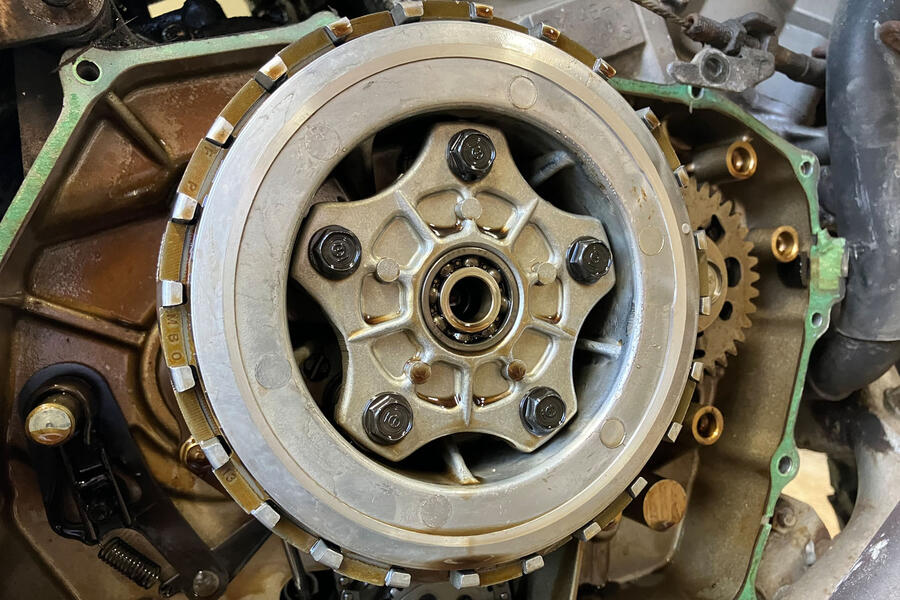A motorbike clutch replacement was supposed to be so easy. But after several days...
On the ride home from a job in Devon, my motorcycle’s clutch slips. This is annoying. I am busy and its MOT is soon due.
But “if you can’t change the situation, change your mindâ€, my friend Fletcher used to say, so I decide to be positive. It’s a chance to learn a new skill. I’ve written ‘clutch’ in a thousand car reviews without ever taking one apart.
Today, that changes.
A garage would want a couple of hours to do this. Owners’ forums say it is relatively simple, except for undoing one big nut, for which I’ll need an impact driver. I have one. So I give myself a day to do it.
First I need to remove the bash plate, which being aluminium is simple, and the exhaust, which containing 24-year-old iron is not.
I immediately shear two bolts and disintegrate a bracket around a crumbling intersection. Regardless of my mindset, this is definitely annoying.
The clutch cover is removed easily and I find what’s meant to be the hard bit: the nut.
This is ‘staked’: part of a flange around the nut is bashed into a notch on the shaft. It’s a crude and rudimentary method of preventing it working loose but, given it hasn’t budged in 75,000 miles, clearly works.
I’m told to prise out the stake with a screwdriver but can’t. I could chisel it off, I’m told, or grind it, but either may leave metal shards in the engine.
Simply, the impact driver may do the job, I read. But my battery-powered one isn’t up to it.

I once vowed that if I didn’t have the right tool for a job, I would either buy it or get a mechanic to do the work instead. The bike is already in pieces, so I go shopping. The day passes.
I like my new air impact driver, which arrives a day or two later. The thread on the bottom looks big, though, and my UK-spec air hose connectors won’t quite fit its American-spec threads.
I’m sure I or a nearby shop have something to convert one to the other. I don’t. The shops don’t. So I go online.
A few days pass. Then everything connects. Within three seconds the nut is undone. Per hour of operation, the air gun is currently costing £180,000.
The clutch pack itself comes apart and goes back together relatively easily, although I don’t remember thinking so at the time.
And so to reassemble everything. I have apparently neglected to realise that something so difficult to undo will also want re-tightening, to a hefty 94lb ft.
I read that I should have left the bike in top gear (I didn’t and it now won’t leave first), so no matter how hard I wedge the rear brake, the back wheel turns instead of the nut torquing. If I use the air gun, I won’t know if I’ve torqued the nut correctly. If I block the back wheel, I risk bending a spoke. And a wedged-on back brake isn’t holding it. The day passes.
The next morning, I’m scratching my head when a friend arrives. I ask them to sit on the bike. I wedge the brake on and have lodged a piece of wood in the wheel. I apply the wrench and… click. As with the undoing, after several days of annoyance, within three seconds the job is done.
Now just to fit a new gasket, then sort the exhaust, then adjust the clutch.
I inspect the edges of the engine case and clutch cover. There is a lot of original gasket applied to both, a baffling substance with the relative hardness of granite and yet the clingy qualities of brie, gecko’s foot and wet shower curtain. It will have to be scraped off, a millimetre at a time.
A day passes. My bike still doesn’t work. The exhaust still looms. Soon, though, I’ll know how to replace a clutch, a skill I’ll have clean forgotten when it next needs changing, in 12 years’ time.


